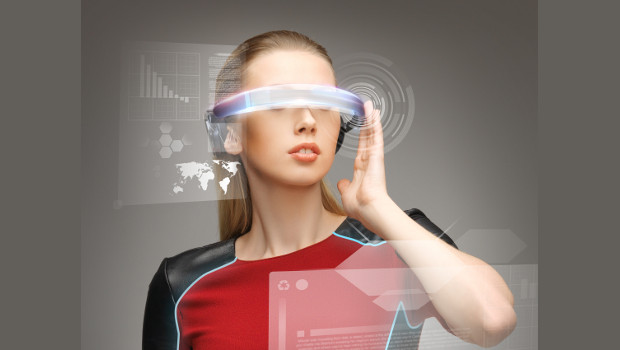When it comes to encouraging adoption of these new technologies, form is really important — if a device is not comfortable to wear and unobtrusive, then Cui of Vuzix said they are unlikely to take off.
“If you look at a lot of the headsets that are out there now, they’re so large that users don’t want to wear them for eight hours a day – they’re just too heavy and awkward. So you need to be able to move to a new platform that gives the usability that you want with the comfort that allows for all day use. That’s true whether you’re a business or consumer user,” he said.
Vuzix’s next product launch will be a new type of binocular headset indistinguishable from a conventional set of sunglasses. “It displays information for both eyes independently in a device that looks like a regular pair of sunglasses. We want the device to be accepted and the form factor needs to be right for that, not just for consumers but also in the industrial settings,” said Cui.
Home wears
In Ireland, there is not yet any widespread use of wearable technology in an enterprise setting. However if international trends continue, it seems likely that wearables will start to appear here. When they do, the question for Irish companies is how to handle their inevitable appearance in the workplace.

There may be real productivity benefits to integrating these devices into the workplace. Every company is different and there may be good business cases for some use where it frees up people’s hands. I think if we do see widespread adoption, it will be driven by consumers and then will bleed over into the workplace in a sort of continuation of the idea of the consumerisation of IT, Brian Murphy, MJ Flood
“The challenges I see around supporting wearable technology seem essentially the same as those that concern managing the BYOD phenomenon,” said Jimmy Sheahan, technical director of Ergo. “How do we ensure that these devices are deployed correctly, that we can trust them and that our customers can trust them? There needs to be a clear line of demarcation governing who is responsible for them. Those are the kinds of questions I envisage getting from our customers.”
While the current crop of mass market wearables, smart watches and fitness trackers, do not seem to have an immediate application in the enterprise, this will change as hardware and software designed for this setting emerges. When this happens, Sheahan believes that as with all new technology, security will be key.
“It’s not a pressing issue here yet but the key is in the safe and secure ‘on-boarding’ of devices in the corporate setting. What the device does isn’t important really — regardless of the technology that is involved, the principles of how it’s managed don’t really change,” he said.
He identified a challenge in the form of the variety of operating systems currently running on these devices. After all, it has taken years for multi-device management (MDM) systems to really catch up with the technology in the consumer’s pockets.
“At the moment these devices are being made by many different companies to many different standards – we would hope to see some standards emerge that will make managing them easier. It definitely will be a continuing trend and I think it will have a positive productivity contribution, but it’s not quite here in Ireland yet,” Sheahan said.
Unconvincing
Brian Murphy of MJ Flood agreed. While he can see scope for some applications for wearables in the Irish context, he remains to be convinced that it will be a significant force in an enterprise setting.
“At the moment, the majority of wearables that are actually available are aimed squarely at the consumer market, and they’re mostly concerned with lifestyle applications connected to sleep and fitness,” he said.
“I could see some of those having applications in the enterprise in areas to do with time and motion — perhaps companies might replace key fobs for opening doors with wearable devices that feedback data on where people spend their time during the day, where they go and so on. I can also see applications for smart clothing that helps promote good health and safety measure adherence. But as for the other applications that are being discussed, I don’t know. It’s too early to tell.”
Murphy said that if and when clients of MJ Flood start looking for guidance on how best to handle new types of technology like this, his advice will be to examine their benefits carefully.
“There may be real productivity benefits to integrating these devices into the workplace. Every company is different and there may be good business cases for some use where it frees up people’s hands, or helps with time and motion studies for example,” he said.
“I think if we do see widespread adoption, it will be driven by consumers and then will bleed over into the workplace in a sort of continuation of the idea of the consumerisation of IT. There is undoubtedly a massive market out there for consumer products and I think this Christmas the shops will be flooded with these devices.”








Subscribers 0
Fans 0
Followers 0
Followers